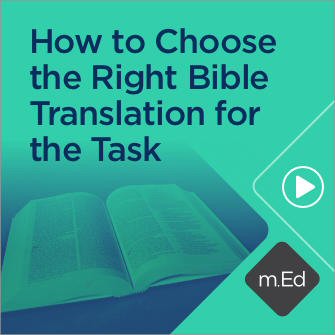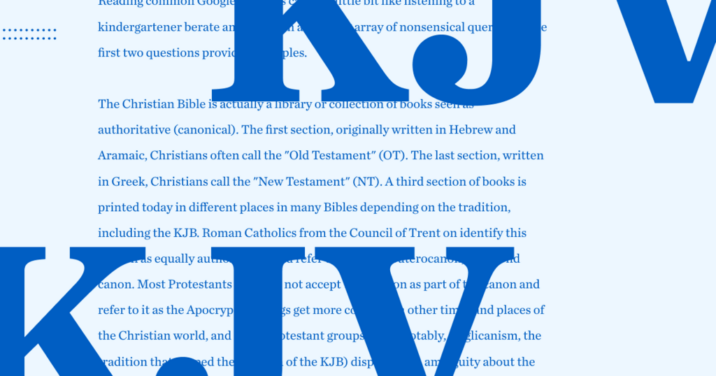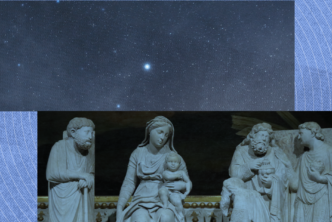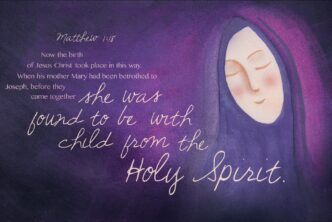A common YouTube pastime is the Wired “Autocorrect Interviews.” A public figure holds a board hiding a series of commonly googled questions behind paper strips. They peel the strips one by one and answer the sometimes absurd, always entertaining questions the web is asking about them. Here, I do something similar, but our famous guest for this interview is the King James Bible (KJB) itself.
First published in 1611, the KJB remains one of the most widely read English Bibles. A free online King James Bible1 can be read in the 1611 first edition, and perhaps the best modern edition can be purchased electronically. A Google search yields ten questions the web is asking about the KJB (some duplicates). We rightly chuckle at some for their absurdity. Let’s peel the strips and dig in as we welcome our guest, the KJB.
1. Is KJV the original Bible?
Someone reared only on the KJB could mistakenly conclude that it is the original. Edgar Goodspeed campaigned in the early twentieth century for publishers to resume printing its original preface for this very reason, citing a “widespread belief” that the KJB was “the original,” which he thought was “the prevailing impression of those who use it” (2–4).
In reality, the Christian Bible is a collection of authoritative books written in other languages. The first section, in Hebrew and Aramaic, is called the “Old Testament” (OT) or Hebrew Bible; the last section, in Greek, the “New Testament” (NT). A third section called the “deuterocanon” or “Apocrypha” is printed in some Bibles, including the 1611 KJB, sometimes within the OT, sometimes between OT and NT (see below).
The original writings of Scripture (called the “autographa”) were handwritten, producing what we call “manuscripts” (Latin for “written by hand”). When the printing press arrived, editors compared manuscripts, catalogued disagreements, and printed texts that chose readings as they saw fit. English Bibles like the KJB translate these. The KJB is neither the original, nor the first, English Bible, nor even the first English Bible translated from original languages. The first full New Testament translated from Greek into English was that by William Tyndale in 1526, and the first full English Bible, going back to the original languages by incorporating his work, that of Miles Coverdale in 1535.
2. Why do they call it the King James Version?
The original title of the KJB was:
The Holy Bible, containing the Old Testament and the New: newly translated out of the original tongues: & with the former translations diligently compared and revised by his Majesty’s special commandment. Appointed to be read in Churches.

We prefer short titles in the modern era. So how should we refer to this Bible? Until a few decades ago it was common for those in the US to refer to it as the “King James Bible” and those in the UK to refer to it as the “Authorized Version.” These titles give a nod back to King James the VI of Scotland and I of England as the originator who first commissioned the text, and to its role as an approved liturgical text for the Church of England (see below). Today that geographical distinction is fading.

A word about “King James Version”: one of the world’s leading experts on the KJB, David Norton, argues that “King James Version” is a misnomer, unfortunately conflating “King James Bible” and “Authorized Version,” running them together (see Norton p. 60, f.n.7). For this and other reasons, most scholars today refer to it as the “King James Bible.” “KJB” has not yet caught on as widely, due to Cambridge copyright requirements that “KJV” accompany citations, perpetuating the misnomer.
3. Is the King James Version of the Bible accurate? Is the KJV a good Bible?
This question is complex, the answer shaped by two prior ones:
- What do we translate?
- How do we translate?
First, all Bible translators choose a base text from which to translate. Most Bibles translate the Masoretic text for the Old Testament, amending it to various degrees in difficult places. For the New Testament, most translate the standard texts produced by the German Bible Society (the Nestle-Aland, 28th edition) and the United Bible Society (UBS, 5th edition), which now share the same text and editorial committee. These represent standard views on “textual criticism,” the art and science of comparing different readings in extant (available) Greek manuscripts and deciding which best reflect the earliest attainable text.
The bulk of these Greek New Testament manuscripts come from the ninth century or later and have a high (not perfect) level of agreement; these are sometimes referred to as the “Byzantine text.” The NA/UBS editors find these less often uniquely preserving original wording, because: 1) they were copied over half a millennium after Christ, and; 2) internal evidence suggests a tendency to expand, smooth, and harmonize. The NA/UBS editors value more highly the relatively fewer but much earlier and more textually diverse manuscripts we now possess.
A few scholars do the opposite; Maurice Robinson’s The New Testament in the Original Greek: Byzantine Textform is a notable example. The doxology at the end of Matthew 6:13 in the KJB (“for thine is the kingdom … “), for example, is contained in the vast majority of later (younger) manuscripts and thus is included in Robinson’s text; but it is judged by the NA/UBS editors as a liturgical expansion—on the basis of internal evidence and important early copies of the Greek New Testament.2
Whether your Bible has this doxology or not is a good indicator of the text it translates.
Textual criticism was in its infancy when the KJB arrived. The KJB translators chose readings from among the standard texts of their day (Erasmus, Stephanus, Beza), in turn compiled on the basis of several dozen mostly Byzantine manuscripts (at least 31 can be counted, 26 identified by GA number). They also consulted Bibles in other languages. The form of these texts is known as the Textus Receptus (TR), or “received text.” No two editions of the TR are identical. They are close but not identical to the Byzantine text. The peculiar flavor of the Latin tradition marks them. Acts 8:37 and 9:5–6, for example, were incorporated by Erasmus into Greek from Latin, and scores of editorial decisions in Revelation find little if any Greek support. These passages are, therefore, absent from or footnoted in most modern Bibles. Only a minority of those who can read New Testament Greek prefer the TR (and those nearly always choose the one behind the KJB, for purchase here) over both the Byzantine or NA/UBS texts.
Thus, the question Is the KJV accurate/a good Bible? depends on the prior question: What should we translate?
- TR defenders are pleased with the KJB’s text. Indeed, they tend to ascribe perfection to it.
- Byzantine defenders find the KJB more accurate than standard texts, but disagree at non-Byzantine points.
- Mainstream textual critics find the TR less accurate overall than the NA28/UBS5.
The second issue is: How do we translate? This too is debated, and people fall into various camps. Some advocate meaning-based philosophies or “functional equivalence” (see the excellent work of David Brunn). Others advocate form-based philosophies or “formal equivalence” (see the work of careful literary interpreter Leland Ryken). Some argue, wrongly, that theology compels one and only one of these two approaches (see Bill Mounce’s response to Wayne Grudem). We should resist tying “accuracy” to either major approach to translation. In reality, all translations use both strategies; the frequency with which they choose one or the other lands them all on a spectrum of more formal to more functional (see Mounce again). The KJB normally exercises a very formal approach, but it certainly includes functional renderings.
The marginal notes of the 1611 KJB often use the dagger sign “†” and then, “Heb.,” “Cal.” or “Gr.” to indicate places where the editors themselves judged a formal translation less suitable for the text. For example, in Acts 12:20, the KJV text reads, “the † king’s chamberlain,” but the margin, “† Gr. that was over the king’s bedchamber.” Woodenly, the Greek is, “the one over the bedroom of the king.” Yet an idiomatic usage suggests a title, that is, “the king’s chamberlain.” BDAG notes that the word normally meaning “bedroom” or “bedchamber” is being “used as part of a title” and can be translated “the one in charge of the bed-chamber, the chamberlain.”
So the question of whether the KJB is “accurate” is loaded; the answer is shaped as much by the presuppositions of the questioner as by the facts of the case. I would say that as a formal translation, of a largely Byzantine text, for those preferring such, the KJB is largely accurate (not perfectly so, as the KJB translators themselves acknowledged in their preface). Others answer differently based on different presuppositions.
4. What religion is the King James Bible?
The KJB falls distinctly within the “Christian” category of world religions. What the questioner likely means to ask is which Christian tradition the KJB represents. This more precise question is complex. Christianity is often divided into three branches by schisms in 1054 and 1517:
- Orthodox
- Catholic (which broke from the Orthodox in 1054)
- Protestant (which broke from the Catholic in 1517)
When King James took the throne of England in 1603, he largely maintained Elizabeth I’s status quo, religiously speaking. The KJB was thus born in the context of the Elizabethan Settlement. That is, the Church of England was a distinctly Protestant church in its theology, but it retained numerous elements of yet-unreformed ceremony, liturgy, and ecclesiology that were drawn from Catholic tradition. Conformists were content with the Settlement, while a whole spectrum of non-conformists sought fuller reformation—including the Puritans who came as “Pilgrims” to America around the time of the KJB. The KJB was thus a distinctly Protestant Bible, but it was one created in the corner of the Protestant church arguably most sympathetic to Catholic concerns.
5. Is the King James Bible Catholic? Is the KJV used by Catholics?
Did this make the KJB acceptable to Roman Catholics? Not initially. In its first two centuries the KJB became the predominant English Protestant Bible while Catholics widely disparaged it (see Ellie Gebarowski-Shafer here and here). This opposition waned after the 1920s.
The Council of Trent, suspicious of English Bibles, complicated Roman Catholic perspectives, declaring the Latin Vulgate alone “authentical” (or authoritative; see pp. 89–96 here). This policy was somewhat moderated in the 1582 Rheims New Testament. Dei verbum, Vatican II’s Dogmatic Constitution on Divine Revelation (promulgated November 18, 1965) virtually reversed Trent, approving access to Scripture for all Christians and urging the Church to “see to it that suitable and correct translations are made into different languages, especially from the original texts.” It allowed that if translations are “produced in cooperation with the separated brethren [Protestants] as well, all Christians will be able to use them” (DV 6.22).
The late Pope Benedict XVI (Joseph Ratzinger) explained of this revolutionary comment that here, “Trent is indeed left far behind,” adding that the practical implications of this change are “theological events of great significance” (266). “Overnight” Gavin D’Costa concludes (788), this declaration “brought many of the innovations of the Reformation [like lay devotional reading and study of the Scriptures in the vernacular] into a Catholic context.” This should probably be interpreted as allowing faithful Catholics to use the King James Bible today if they so choose. And many do.
One obstacle remains: many KJB editions are printed without the full Catholic canon (see below). However, KJBs can be purchased with the Apocrypha in the Protestant grouping innovated by Luther, situated between the OT and NT. One group prints a “King James Bible For Catholics” arranging the books in typical Roman Catholic order.
The KJB is not a Roman Catholic Bible, and it was long viewed with suspicion by Roman Catholics, but it is now generally allowed for reading by faithful Roman Catholics.
6. Why did King James change the Bible?
The internet asks questions because it doesn’t know the answer; here, quite apparently, the internet is speaking ignorance. And I, for my part, have a hard time knowing quite what this question itself might mean. But I will do my best to answer anyway!
King James did not himself serve as a translator of the KJB, though he probably would have had the requisite skill; he was the most scholarly and prolific monarch to hold the English throne. He commissioned the KJB on Monday, January 18, 1604, at the Hampton Court Conference; he possibly appointed the translators and helped compose the Rules that directed it (see BL Add MS 32092, folios 203r-204v, in the British Library digital viewer); and he stepped in a few times to hurry the process along. But after this, King James had little directly to do with the Bible that now bears his name.

“Change the Bible” is far too strong a phrase, but the KJB should be seen as at heart a revision. Translators must choose whether to translate freshly, creating a “new translation,” or to update a prior translation, resulting in a “revision.” The KJB blurs this distinction, boasting on its title page that it is “newly translated” but also that in it former translations are “diligently compared and revised.” Over the last several decades a number of work-in-progress documents (see a brief list with links) have come to light, each indicating, Jeffrey Miller notes in a catalog of one, that “the translators took [the] injunction to treat their work as a revision [of the 1602 Bishops’ Bible] seriously.”
One might argue that the genius of the KJB was its ability to bring together four elements in a combination perhaps unique to it:
- Bishops’ Bible base, revised only as needed
- Examination of original languages in a three-stage cross-review
- Revisions (mostly) limited to wording from prior Bibles
- Translations into other languages consulted for comparison
The choice to revise the current church Bible (Rule 1) and consciously limit the wording of revisions (where possible) to the readings of a chosen set of prior Bibles (Rule 14) kept the end product strongly traditional. Extensive cross-review (Rules 8–12) prevented sectarianism and curbed Puritan influence. Consultation of multi-linguistic work made the ultimate product not just a translation from Greek and Hebrew but also an amalgam of cross-cultural translation. As Miles Smith put it in the KJB preface:
Neither did we think much to consult the translators or commentators, Chaldee, Hebrew, Syrian, Greek, or Latin, no, nor the Spanish, French, Italian, or Dutch; neither did we disdain to revise that which we had done, and to bring back to the anvil that which we had hammered: but having and using as great helps as were needful, and fearing no reproach for slowness, nor coveting praise for expedition, we have at the length, through the good hand of the Lord upon us, brought the work to that pass that you see.3
The end result was a conservative revision of the official church Bible, a liturgical text that gave close attention to the original languages and consciously stood on the shoulders of the best English Bibles while staying abreast of the international biblical scholarship of the time.
7. What books did King James remove from the Bible?
The only books the internet could have in mind here, the Apocrypha, were actually not removed; they were present in the 1611 KJB. The first editions included 14 books between the OT and the NT under the title “Apocrypha,” with no dedicated title page. Here are those books:
- 1–2 Esdras
- Tobit
- Judith
- Additions to Esther (10:5–16:24)
- Wisdom of Solomon
- Ecclesiasticus
- Additions to Jeremiah (Baruch and Epistle to Jeremiah)
- Additions to Daniel (as three books):
- Song of the Three, including Azariah’s prayer
- Susanna
- Bel and the Dragon
- Prayer of Manasseh
- 1–2 Maccabees
Because the KJB revises the Bishops’ Bible it largely retains its structure for and placement of the Apocrypha (except that 3–4 Esrdas becomes 1–2 Esdras and Tobias becomes Tobit). The running headers, instead of giving chapter content as they do elsewhere in the KJB, simply say “Apocrypha” on every page.
The English Reformation took an ambiguous line regarding these books. Henry VIII cited them as Scripture in The King’s Book. The Book of Common Prayer contained numerous readings and lessons from the Apocrypha as an authoritative liturgical text. Two official books of Homilies, required by Elizabethan injunctions of 1559, cited apocryphal texts as the word of God. The Articles of Religion (42 in 1552, then 38 in 1563, and 39 in 1571) were ambiguous. On the one hand they declared in Article XXXV that the Homilies, “contain a godly and wholesome doctrine,” which includes its use of the Apocrypha as Scripture. On the other hand, Article VI of the 39 Articles in 1571 clearly asserted Jerome’s position against Trent, declaring these “other books” useful to read in the church for life and manners (a liturgical canon) but not authoritative for establishing doctrine (a doctrinal canon):
And the other Books (as [J]erome saith) the Church doth read for example of life and instruction of manners; but yet doth it not apply them to establish any doctrine.4
None of the earlier strands exalting the Apocrypha were removed. Thus, within the formularies of the Church of England were both vestigial elements pointing in an old direction and fresh words pointing in a newer one. The tendency today is to wrongly force the Apocrypha of the 1611 KJB into the mold of either the declaration of the Council of Trent or the later declaration of the Confession of Faith of the Westminster Assembly in 1647, which negatively concluded that these books, “not being of divine inspiration, are no part of the Canon of the Scripture” and argued that they “are of no authority in the Church of God, nor to be any otherwise approved, or made use of, than other human writings.” Assembly members, Chad Van Dixhoorn notes bluntly, were directly “contradicting the teaching of the Church of England” (11).
While there was lively debate between translators who worked on the KJB about the status of these books, none held the position of Trent. Some held a Puritan antecedent to Westminster. The official position which situated them in the KJB stood frozen ambiguously between Trent and Westminster.
The KJB was occasionally, but not normally, printed (usually in personal formats rather than as pulpit Bibles) without the Apocrypha as early as 1619.5
Attitudes toward the Apocrypha varied greatly during the tumultuous Wars of the Three Kingdoms, after which their inclusion again became standard for two centuries. Controversies in the early twentieth century among the British and Foreign Bible Society (now simply Bible Society) caused most KJBs to be printed without the Apocrypha. Official publishers like Cambridge continue to offer editions with the Apocrypha and without it.
8. Who made the KJV?
King James commissioned the new Bible at Hampton Court in 1604. He wrote a letter to bishop of London (soon to become archbishop of Canterbury) Richard Bancroft on July 22, 1604, stating that he had “appointed certain learned men, to the number of four and fifty, for the translating of the Bible.” The chosen translators were set out in a list known as An Order Agreed upon for Translation of the Bible, which accompanied a list of rules for the Translators to follow titled, The Rules to Be Observed in Translation. (See an early copy from BL MS Harley 750 on pp. 88–90.) Both were likely composed by Bancroft with input from James. Bancroft supervised the work.

The work, as originally envisioned, took place in three basic stages:
- Six companies in three locations (a Hebrew and Greek team at each) revise their allotted books.
- Individuals assess the Bishops’ text and bring proposed revisions to company meetings.
- Companies assess and debate revisions.
- Companies send proposed revisions to other companies for review.
- Companies consult outside experts where needed.
- Final revision proposals sent from each company to the General Meeting.
- A general meeting at Stationers’ Hall in London reviews the whole Bible, deciding among proposed revisions.
- Two representatives are sent from each company.
- Three of their names are known: John Harmer, Andrew Downes, and John Bois.
- Final editors put finishing touches on the whole Bible.
- Miles Smith and Thomas Bilson craft prelims and paratexts (calendar, dedication, preface, headings, etc.).
- Genealogies by Hugh Broughton and John Speed as well as Speed’s maps are included.
- Cornelius Boel crafts copper engraving for the title page.
- Robert Barker, holding the royal patent, runs the work through his press in 1611.
The six companies were divided as follows:
- Hebrew Companies:
- Westminster: Genesis–2 Kings
- Cambridge: 1 Chronicles–Song of Songs
- Oxford: the Prophets (Isaiah to Malachi)
- Greek Companies:
- Cambridge: The Apocrypha
- Oxford: the Gospels, Acts, Revelation
- Westminster: the NT Epistles
Almost all the “learned men” who gave us the KJB were ordained clergy in the Church of England, and they crafted it as an official Church of England text.

9. Is the KJV inspired? Is the KJV perfect?
Longstanding Christian tradition views the Bible in the original languages as divinely “inspired,” a technical term drawn from Paul’s second letter to Timothy and meaning something like “breathed out by God.” This isn’t the inspiration you get from a moving poem or speech but the act of the Holy Spirit moving human writers (Moses, Paul, etc.) such that their words are also God’s Word and thus perfect and truthful. Longstanding tradition also views translations of the Bible as the Word of God—though normally, especially in the Protestant tradition, translations are considered to be subordinate to the original languages. That is, translators are not “inspired” as original authors were, and their work is not perfect or protected from human error. Early Christians in the Greek-speaking world did believe that the Septuagint (a Greek translation of the Hebrew Bible) was inspired; early Christians in Ethiopia believed that their Ge’ez Bible was inspired; and many Europeans later believed that the Latin Vulgate was inspired. Occasionally some have similarly seen the KJB itself as inspired and/or perfect. Fortunately, this view is rare and its adherents are few.
Perhaps KJB Translator Miles Smith put it best in the preface to the KJB. He affirmed against a common Roman Catholic view of that era that translations were the word of God; God’s speech was translatable. Yet he acknowledged that only a work under inspiration of the Spirit could be perfect, and translation, he concluded, was not (xxvii):
Now to the latter we answer, that we do not deny, nay, we affirm and avow, that the very meanest translation of the Bible in English set forth by men of our profession (for we have seen none of theirs of the whole Bible as yet) containeth the word of God, nay, is the word of God: as the King’s speech which he uttered in Parliament, being translated into French, Dutch, Italian and Latin, is still the King’s speech, though it be not interpreted by every translator with the like grace, nor peradventure so fitly for phrase, nor so expressly for sense, everywhere.6
The Scriptures he acknowledges “to be so full and so perfect”7; and yet he carefully admits that all translations have “imperfections and blemishes.” Translators are not inspired as apostolic authors were, yet the product of their work is still the Word of God:
No cause therefore why the word translated should be denied to be the word, or forbidden to be current, notwithstanding that some imperfections and blemishes may be noted in the setting forth of it. For whatever was perfect under the sun, where Apostles or apostolic men, that is, men endued with an extraordinary measure of God’s Spirit, and privileged with the privilege of infallibility, had not their hand?8
10. Why is the KJV so popular?
How popular it is has been debated. Given that virtually 100 percent of English Bible readers once read only the KJB, and about half now reach for a modern alternative, a long-term pattern of decline appears. Given that around half still reach for a KJB, its enduring popularity over four centuries cannot be denied. Some argue that it slowly and grudgingly gained wide readership for financial or political reasons. Others, I think more credibly, argue that it was immediately loved. Whatever caused its initial rise, at least five factors cemented its endurance.
First, it was royally commissioned by the monarch of the only English-speaking nation then on earth. Protracted debates have occurred about whether the KJB was ever officially “authorized” as some earlier Bibles had been. Franklin Gruber in a 1913 article in The Biblical World (218–233) exemplifies the “fully authorized” position. Rev. Randall T. Davidson, in an 1881 article in Macmillan’s Magazine 9, exemplifies the “never authorized” position. Most scholars today agree with Davidson. Ken Fincham wisely points out more recently that “too much has been invested in these fine distinctions.”10
While it never received the planned official “authorization,” likely because of the premature death of Overseer Richard Bancroft, Fincham demonstrates that it was immediately received as royally approved due to its commissioning by James VI and I. 11
This amounts to virtually the same thing. This de facto approval gave the KJB a rare boost in the English Bible market.
Second, the end of the English Revolution spelled the failure of the Puritan project to craft the Church of England in its image and established a henceforth Anglican Church. Barraged by decades of war, the English reached into a calmer past for a way to still the political waves. Their fingers clutched the Elizabethan Settlement of religion and the early Jacobean Bible and Book of Common Prayer, texts the nation had known before the storm arrived with Charles I. It is no coincidence that around the 1660s the KJB became so ubiquitous that it was simply “the Bible” in English, with no further qualifier needed—a title it held without real contest for roughly 200 years.
Third, and related, the Book of Common Prayer became a cultural phenomenon; and the KJB, a companion volume, rode the waves of its success. Diarmaid MacCulloch wrote (136) that from its birth to 1800, the BCP “was the literary text most thoroughly known by most people in [England], and one should include the Bible among its lesser rivals.” England was born, baptized, married, lived, breathed, and met its God, by this book. Contained within it from 1662 onward was (apart from the Psalms and some prayers) the text of the KJB.
Intertwined with this cultural reach was the more negative British colonization which spread with it both the BCP and the KJB. Australia, India, the New World, and more were all impacted by a Christian mission entangled with British imperialism. By the time the dust settled, the KJB had become the Bible of the English speaking world with a global bootprint.
Fourth, the age birthing the KJB also bore the most enduring classical English prose. Milton, Donne, Spencer, Herbert, and Shakespeare flourished during this era. Many hear in this golden age the most eloquent English voice ever spoken. Rightly or wrongly (scholars take both positions, as Norton explains), the KJB was carried with this estimation to the position of “the noblest monument of English prose,” to use the title of John Lowes’ influential essay. The KJB became as essential to English literary culture as Shakespeare.
Fifth, the KJB captured the hearts of Bible readers in English. For those who believe God speaks in a higher tone and not a conversational one, it is in the KJB that his voice’s greatest majesty resounds. The unique elements of composition noted above attained a rare balance between traditional language, internationally informed revision, faithfulness to the original languages, and a register of English that sounds like the voice many expect from God. That is precisely what many want in a Bible, and the KJB will likely retain its popularity and outlive many a competitor in the Bible market. Gordon Campbell notes, in a work accompanying an edition of the 1611 KJB he edited for Oxford, that it proves “the most enduring embodiment of Scripture” in English and outlives competitors normally judged by it:
Indeed, the KJV is the fountainhead of Bible translation into English, and, although the finest modern translations are models of good scholarly practice, they are admired rather than loved. It is the King James Version that has been loved by generations of those who have listened to it or read it to themselves or to others; other translations may engage the mind, but the King James Version is the Bible of the heart.12
Related resources
The New Cambridge Paragraph Bible with the Apocrypha, rev. ed. (NCPB)
Regular price: $9.99

How to Choose the Right Bible Translation for the Task (0.75 hour course)
Regular price: $29.99
- The Falvey Library at Villanova University has higher-resolution page scans of the 1611 KJV but is more difficult to navigate
- See the explanation of Bruce Metzger in his Textual Commentary on pages 16–17.
- David Norton, ed., The New Cambridge Paragraph Bible with the Apocrypha: King James Version, Revised edition., vol. 1 (Cambridge, UK: Cambridge University Press, 2011), xxxii.
- The Book of Common Prayer: And Administration of the Sacraments and Other Rites and Ceremonies of the Church (New York: The Protestant Episcopal Church, 1892), 558.
- See Andrew Hill, 345–358.
- David Norton, ed., The New Cambridge Paragraph Bible with the Apocrypha: King James Version, Revised edition., vol. 1 (Cambridge, UK: Cambridge University Press, 2011), xxviii.
- David Norton, ed., The New Cambridge Paragraph Bible with the Apocrypha: King James Version, Revised edition., vol. 1 (Cambridge, UK: Cambridge University Press, 2011), xx.
- David Norton, ed., The New Cambridge Paragraph Bible with the Apocrypha: King James Version, Revised edition., vol. 1 (Cambridge, UK: Cambridge University Press, 2011), xxviii.
- Davidson, Randall T. “The Authorization of the English Bible.” Macmillan’s Magazine XLIV, no. May 1881–Oct 1881 (June 1881): 436–441.
- [Gruber, L. Franklin. “The Version of 1611: Propriety of Calling It the ‘Authorized Version,’ or ‘King James’s Version.’” The Biblical World 42, no. 4 (1913): 218–33.
- Fincham, Kenneth. “The King James Bible: Crown, Church and People,” Journal of Ecclesiastical History 71, no. 1 (January 2020): 77–97.
- Gordon Campbell, Bible: The Story of the King James Version. Oxford: Oxford University Press, 2011), 275.







